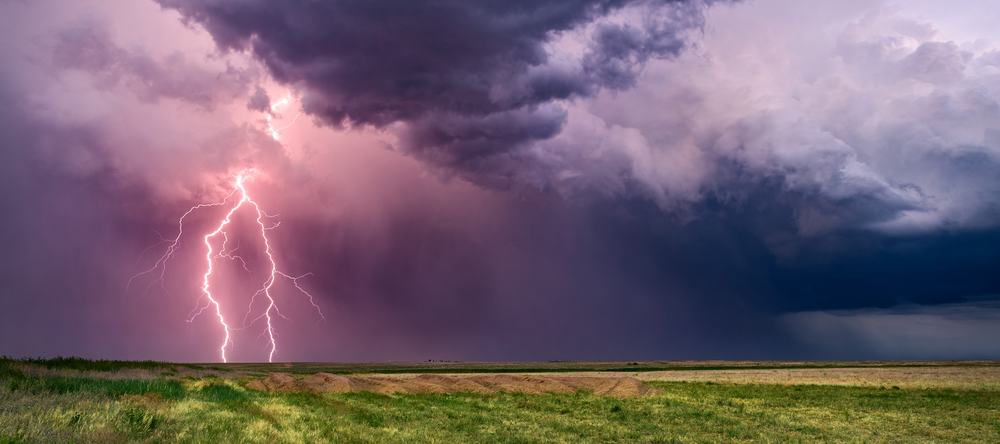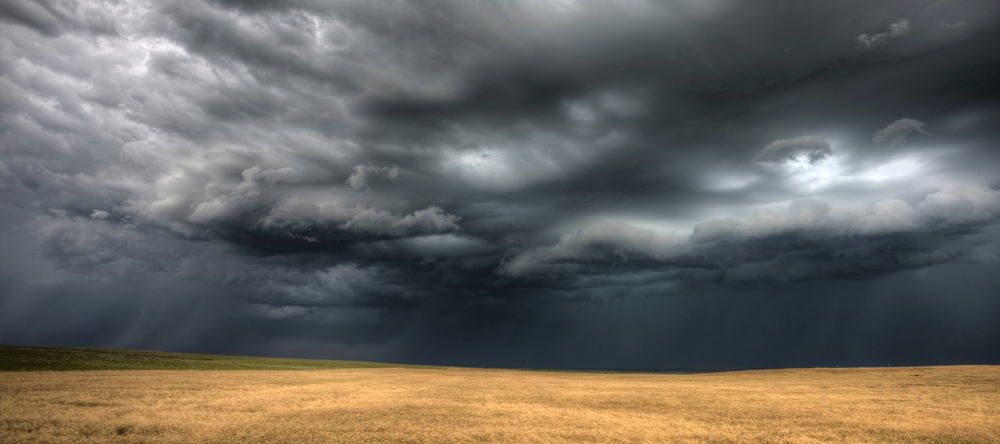Frosts, black ice, hard rime, fog and hail – weather events causing difficulties for drivers and damage to agriculture and forestry
An inflow of cold air masses from, for example, from the Arctic regions can cause frosts in Poland, which cause heavy losses in orchards and horticulture. The threat of frost increases with the earlier arrival of spring and the sharp increase in air temperature at its onset, which contributes to the rapid growth of vegetation. Black ice and hard rime are equally dangerous.
Black ice causes traffic difficulties, increases the risk of traffic accidents and bone fractures and bruises as a result of falls on slippery surfaces. The onset of spring is conducive to this phenomenon due to the fairly frequent fluctuations in air temperature around 0oC during this period. More often than not, the formation of black ice occurs during the passage of warm and humid air masses over a cooled area.
Precipitation of freezing drizzle or rain can damage the branches of young trees, snap power lines. A similar effect can be caused by the appearance of hard rime, an atmospheric deposit in the form of ice crystals, which is formed when fog droplets freeze on surfaces at negative temperatures. With moderately strong winds and temperatures of around -8oC to 0oC, hard rime forms, which can grow to a thickness of several tens of centimetres.
Frequent fog in spring is also a major inconvenience for drivers. Advection fog, which is formed during the inflow of warm moist air masses over cooled ground is characterised by the greatest spatial extent and duration. In spring, we can encounter a wide variety of forms of precipitation – rain, snow, snow pellet, ice pellets, hail.

Thunderstorms, tornadoes, strong winds and heavy rainfall – local damage and threat to life
The most extreme weather events are accompanied by dense, towering vertical clouds (Cumulonimbus). This is when intense rainfall, snow, hail, lightning, strong and gusty winds, tornadoes and downbursts can occur. Lightning, scud clouds and tornadoes are particularly spectacular during thunderstorms. However, these are very dangerous phenomena that can pose a threat to human life.
The number of tornadoes in Poland increases in spring along with rises in temperature. In March and April, they occur very rarely, while from May onwards the number of tornadoes increases. Fortunately, in Poland tornadoes occur infrequently in spring and their impact range is small. The tornado damage belt usually varies between 50 and 100 metres. In Poland, there have also been a handful of cases during which the damage belt was between 1-2 km wide.
Strong winds are favoured by the movement of low-pressure systems over Poland related to the general atmospheric circulation, and the topography of the land determining the formation of high-speed local winds, e.g. warm and dry foehn. Strong and gusty winds can also occur during local thunderstorms, which can develop when the ground heats up unevenly, encouraging the development of the vertical air movements (convection) necessary for the formation of a Cumulonimbus cloud.
Hailfall from storm clouds is clearly one of the greatest hazards, which can, for example, destroy plants, damage greenhouses or cars. Hail with a diameter of 2 cm causes significant damage to agricultural crops, while hail with a diameter of 5 cm poses a threat to human life. Hail takes the form of balls or lumps of ice called hail. The hailstone is made of thick and translucent layers of ice, alternating with layers that are thin, white and opaque and is formed in a Cumulonimbus cloud at temperatures between -20oC and -10oC.
The largest hailstones are formed when there are very strong ascending air currents in the cloud (with speeds reaching up to 250 km/h in the upper part of the cloud) and a long duration of the storm cloud. Intense hailfall is known as hailstorm.
Heavy rainfall can cause local flooding or waterlogging. Flooding can also occur in spring as a result of melting snow or the formation of ice jams on rivers. The likelihood of this type of flooding has been very low in recent years due to the low winter snowfall and the short duration of snow cover.
Drought – a dangerous phenomenon that is developing gradually
Major property damage and water supply problems can be caused by drought. This phenomenon develops gradually as a result of a shortage of precipitation, accompanied by high air temperatures that contribute to an increase in evapotranspiration (the process of evaporation from the ground and from aboveground plant parts).
The lack of snow cover at the end of winter together with the onset of drought in spring is a very dangerous situation, as plants need the most water in the early stages of development. Snow cover is a reservoir of water for plants at the beginning of the growing season (the period of plant growth and development). Its absence means that the primary source of water for plants in spring is rainfall and soil water reserves, which quickly disappear when drought strikes.
Drought is an example of a threat to which human activity can contribute – changes in the use of land, inappropriate drainage operations, cutting down trees and shrubs, overexploitation of surface and groundwater resources. Spring drought may cause abnormal vegetation development, reduced crop quality, reduced yields and consequently increased food prices.
However, it should be remembered that spring is not only a period of threatening atmospheric phenomena, but also a period of intensive vegetation development, increased animal activity and a reduction in the amount of pollutants in the air.
Forecasting – what will spring and summer be like?
Spring forecasts are a major challenge for synopticians. Correct weather forecasting in spring is sometimes difficult due to the fact that weather conditions at this time of year are often characterised by high temporal variability and meteorological phenomena sometimes occur on a small spatial scale. Today, very complex climate models using equations from atmospheric thermodynamics are used for weather forecasting. Thanks to the development of computer technology and the large amount of meteorological data, the verifiability of weather forecasting is now better compared to the last century.
Text: Dr Piotr Piotrowski, Department of Hydrology and Water Management, Faculty of Geographical Sciences, University of Lodz
Edit: Iwona Ptaszek-Zielińska, Communications and PR Centre, University of Lodz
The mission of the University of Lodz is to conduct reliable research and actively disseminate facts and research results so as to wisely educate future generations, be useful to society and courageously respond to the challenges of the modern world. Scientific excellence is always our best compass. Our values include: courage, curiosity, commitment, cooperation and respect.

